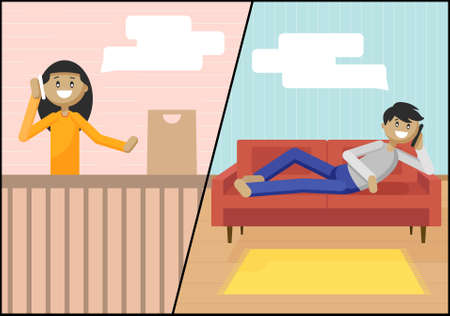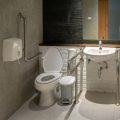Creating a Comfortable and Accessible Sleeping Space
When adapting a bedroom for rehabilitation or recovery, prioritising both comfort and accessibility is key. A well-arranged sleeping space not only supports restful sleep but also promotes independence and safety for individuals facing mobility challenges. Begin by selecting an appropriate bed—ideally one with adjustable height settings or side rails to aid getting in and out. Position the bed to allow easy access from the doorway and ensure there is ample space on both sides for carers or mobility aids such as walking frames or wheelchairs.
Consider the placement of essential items within arm’s reach, such as a bedside table with drawers for personal belongings, medication, and a touch lamp for ease during the night. Flooring should be level and non-slip to minimise trip hazards, while low-pile carpets or secure mats offer additional comfort underfoot. Blackout curtains can help regulate light, supporting better rest, and thermal curtains are particularly valuable in the UK climate to maintain warmth during colder months.
Above all, involve the individual in decisions about their environment. By combining thoughtful equipment choices with a layout tailored to specific needs, you create a bedroom that fosters healing, reassurance, and dignity throughout the recovery journey.
Essential Equipment: Beds, Mattresses and Mobility Aids
Choosing the right bedroom equipment is a crucial step in creating a safe and supportive environment for rehabilitation and recovery. In the UK, there are several specialised products designed to enhance both comfort and independence for those recovering from injury, surgery, or managing long-term conditions at home. Below is an overview of the most commonly recommended beds, mattresses, and mobility aids that help individuals regain their confidence and autonomy during this important stage.
Beds Suitable for Rehabilitation
Standard beds may not always provide the necessary support or adjustability for someone undergoing rehab. Consideration should be given to:
| Type of Bed | Features | Benefits |
|---|---|---|
| Profiling Beds | Adjustable height, head and foot sections | Eases transfers, improves comfort, reduces carer strain |
| Hospital-Style Beds | Side rails, electronic controls | Enhanced safety, supports various medical needs |
| Divan Beds with Storage | Integrated drawers | Keeps essentials close without cluttering space |
Specialised Mattresses
The choice of mattress can have a significant impact on pressure relief and sleep quality. Key options often recommended by UK occupational therapists include:
- Pressure-relieving foam mattresses: Prevents bedsores for those spending extended time in bed.
- Alternating air mattresses: Circulates air to reduce pressure points, ideal for limited mobility.
- Pocket sprung mattresses: Offers responsive support while maintaining comfort.
Mobility Aids for Bedroom Independence
A variety of mobility aids are available to support safer movement within the bedroom and promote self-sufficiency. Some popular choices include:
| Aid | Description | Common UK Usage |
|---|---|---|
| Bed Rails | Attach to sides of bed for support getting in/out | Elderly or post-surgery patients |
| Overbed Tables | Height-adjustable tables that slide over bed surface | Eases eating, reading or using devices in bed |
| Transfer Poles/Handles | Provide a secure grip point near the bed | Aids balance when standing up or sitting down |
A Compassionate Approach to Selection
Selecting the right equipment is best done in partnership with healthcare professionals such as occupational therapists or district nurses. They can assess individual needs, consider room layout, and ensure all adaptations meet NHS guidelines and British safety standards. Prioritising comfort alongside functionality helps foster a sense of dignity and promotes more effective recovery at home.

3. Furniture Placement and Room Layout Suggestions
Thoughtful furniture placement is essential in creating a bedroom that supports rehabilitation and recovery, especially within the varied room sizes typical of British homes. Whether you are working with a compact terrace or a spacious detached property, maximising safety, ease of movement, and convenience can make all the difference to daily comfort and independence.
Prioritise Clear Pathways
Arrange furniture to allow clear, unobstructed walkways around the bed and towards the door, windows, and any ensuite facilities. Aim for at least 80cm of space to accommodate mobility aids like walking frames or wheelchairs if required. In smaller rooms, consider swapping bulky wardrobes for built-in storage or open shelving to free up vital floor space.
Bed Positioning
Place the bed so it is easily accessible from both sides if possible, allowing carers to assist more effectively. For those with limited mobility, situate the bed near the entrance or bathroom to minimise unnecessary movement. Adjustable beds can be invaluable for comfort and support during recovery.
Accessible Essentials
Keep frequently used items within easy reach by positioning bedside tables close at hand, ideally no more than an arm’s length away when lying down. Opt for stable furniture with rounded edges to reduce injury risks. For larger rooms, a comfortable chair placed near a window offers a restful spot for reading or enjoying natural light.
Adaptations for Different Room Sizes
In typical British box rooms, multipurpose furniture such as storage ottomans or wall-mounted fold-down desks help conserve space without compromising accessibility. In generously sized bedrooms, zone the room by using rugs or subtle dividers to define sleeping and activity areas while ensuring all pathways remain clutter-free.
Final Tips for Safety and Comfort
Avoid trailing cables and ensure rugs are non-slip to prevent falls. Consider motion-sensor lighting for nighttime trips and install sturdy grab rails where needed. Regularly review the layout as needs change during recovery—sometimes small adjustments can have a big impact on both confidence and independence.
Lighting, Flooring, and Temperature Control
Creating a comfortable and safe bedroom environment for rehabilitation and recovery requires thoughtful attention to lighting, flooring, and temperature control. These elements can greatly influence daily comfort and safety, particularly in the context of the British climate, which is known for its variability. Here are some practical suggestions to help you make effective adaptations.
Lighting: Balancing Practicality and Comfort
Proper lighting is crucial for both visibility and wellbeing. Natural light can boost mood and aid recovery, so maximise daylight with sheer curtains or blinds that are easy to open. For evenings or cloudy days, choose adjustable LED lamps or dimmable ceiling lights. Consider motion-sensor nightlights along pathways to the bathroom or doorways for added safety during nighttime mobility. Task lighting near the bed helps with reading or personal care activities without disturbing restful ambience.
Suggested Lighting Adaptations
| Area | Recommended Lighting | Purpose |
|---|---|---|
| Bedside | Dimmable bedside lamp or touch-activated light | Easy access for reading or nighttime needs |
| Main Room | Adjustable ceiling light (preferably LED) | General illumination; energy efficient |
| Pathways/Entrances | Motion-sensor nightlight | Safe navigation after dark |
| Windows | Sheer curtains/blinds | Maximise natural light while maintaining privacy |
Flooring: Reducing Hazards and Supporting Mobility
The choice of flooring should reflect both safety and comfort, particularly given the dampness often experienced in British homes. Non-slip vinyl or cushioned flooring is recommended as it provides stability underfoot while being gentle on joints. Avoid loose rugs or mats that could become tripping hazards. If carpets are preferred for warmth, ensure they are securely fitted and have low pile for ease of movement with walking aids or wheelchairs.
Flooring Options Comparison Table
| Type of Flooring | Advantages | Considerations |
|---|---|---|
| Non-slip vinyl | Water-resistant, easy to clean, stable surface | Might feel cooler underfoot; add rugs only if secure |
| Cushioned flooring | Softer impact, supportive for standing/mobility aids | Select products designed for heavy use areas |
| Low-pile carpet (fitted) | Adds warmth, reduces noise, comfortable underfoot | Avoid thick pile; ensure secure fitting throughout room |
| Laminates/wooden floors (with anti-slip finish) | Smooth surface, easy wheelchair movement | Might need extra insulation in colder months; check slip-resistance rating |
Temperature Control: Comfort All Year Round in Britain’s Climate
The unpredictable British weather means bedrooms must be adaptable for both chilly winters and unexpected summer heatwaves. Use programmable thermostats to maintain a consistent temperature, ideally between 18°C–21°C for optimal comfort. Install draught excluders on doors and windows to reduce cold air ingress. In older properties, portable oil-filled radiators can supplement central heating safely. For warmer days, lightweight bedding and a small desk fan can help keep things cool without creating a draught.
Key Tips for Managing Temperature:
- Draught proofing: Fit excluders around doors/windows to prevent heat loss.
- Bedding: Choose breathable cotton layers that can be easily adjusted.
- Heating: Programmable radiator valves allow precise control based on daily routines.
- Ventilation: Open windows when possible for fresh air but consider window restrictors for safety.
A well-lit, safely floored, and comfortably heated bedroom not only supports rehabilitation but also promotes peace of mind for everyone involved in the care journey—especially important in the ever-changing British climate.
5. Personal Touches: Making the Space Feel Like Home
During rehabilitation and recovery, the emotional comfort of a familiar and welcoming environment is just as important as physical support. Personalising the bedroom can offer significant psychological benefits, helping individuals feel more at ease and connected to their space.
Incorporate Familiar Items
Surrounding oneself with cherished belongings can foster a sense of security and continuity. Displaying family photographs, treasured books, or much-loved ornaments on shelves or bedside tables adds a personal touch and can be especially comforting during challenging times.
Choose Soothing Colours
The right colour palette can have a profound impact on mood and relaxation. Opt for soft, calming shades such as gentle blues, muted greens, or warm neutrals to create a tranquil atmosphere. In line with British sensibilities, these understated hues provide comfort without overwhelming the senses.
Add Meaningful Decor
Thoughtfully selected artwork, handmade crafts, or textiles that reflect personal interests can make the space uniquely yours. Consider hanging up a favourite painting or adding cushions in fabrics that evoke fond memories. For many in the UK, touches like a tartan throw or floral bedding may also bring feelings of homeliness and nostalgia.
Support Emotional Wellbeing
Personalisation is not just about aesthetics; it plays a crucial role in supporting emotional wellbeing throughout rehabilitation. Encouraging self-expression through decor helps maintain one’s identity and offers daily moments of joy and reassurance. Even small changes—a vase of fresh flowers or a well-loved radio—can make the room feel inviting and truly your own.
6. Navigating Funding and Resources in the UK
Adapting a bedroom for rehabilitation and recovery can feel overwhelming, especially when considering the costs involved. Thankfully, there are several avenues in the UK that offer support—both financially and practically—to help make your space safer and more comfortable. Here’s how you can access the right resources and guidance to ensure your bedroom adaptations are both suitable and sustainable.
Support from the NHS
The NHS offers assessments through occupational therapists who can identify your specific needs for equipment or adaptations. If you qualify, essential equipment such as adjustable beds, bed rails, or hoists may be provided on loan. To start this process, speak with your GP or healthcare team for a referral to community health services. Remember, NHS provision is typically based on medical necessity, so a thorough assessment is key.
Local Council Assistance
Your local council plays a vital role in providing support for home adaptations. Under the Care Act 2014, councils have a duty to assess adults for care needs—including suitable home adaptations. You may be eligible for a Disabled Facilities Grant (DFG), which helps cover larger adaptation costs like widening doorways or installing ceiling track hoists. Applications are means-tested and assessed based on personal circumstances. Reach out to your local authority’s social care department to begin an assessment and discuss available funding options.
Charities and Community Organisations
If statutory funding doesn’t cover everything you need, trusted UK charities can bridge the gap. Organisations such as Age UK, The British Red Cross, and Foundations offer advice, small grants, or even direct provision of certain equipment. Some charities specialise in support for particular conditions (e.g., Parkinson’s UK or MS Society) and may offer tailored grants or loan schemes for bedroom adaptations.
Practical Steps for Seeking Help
- Start with an assessment: Contact your GP or local council for an occupational therapy assessment.
- Research eligibility: Check if you qualify for NHS equipment loans or a Disabled Facilities Grant from your council.
- Explore charities: Search for condition-specific charities or those focused on independent living for additional support.
A Gentle Reminder
This journey can take time and patience. Don’t hesitate to ask professionals questions and reach out to loved ones or carers for support along the way. With the right guidance and resources, adapting your bedroom can become an empowering step towards greater comfort and independence during recovery.


